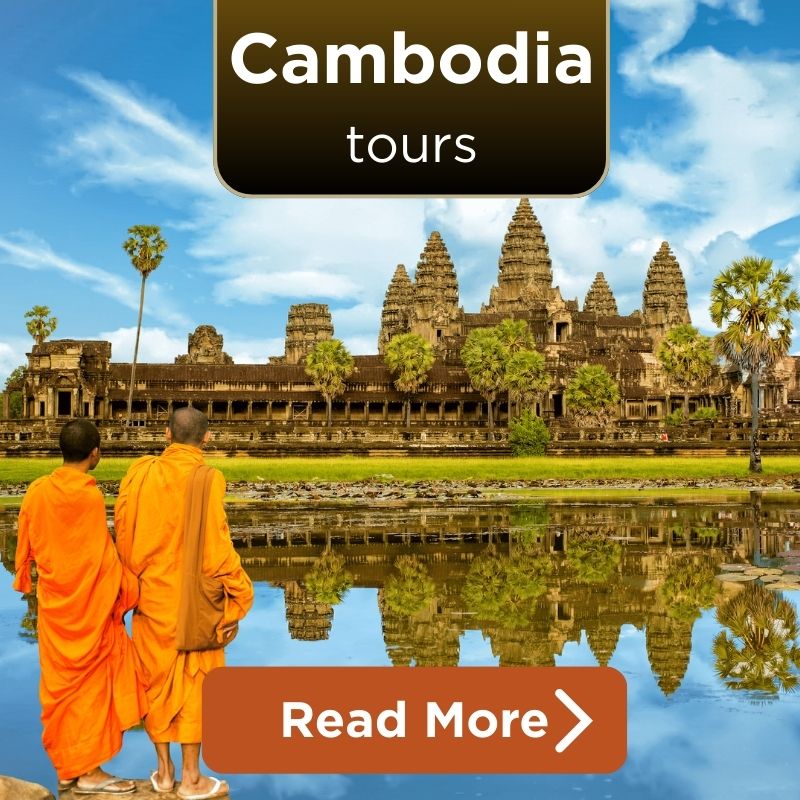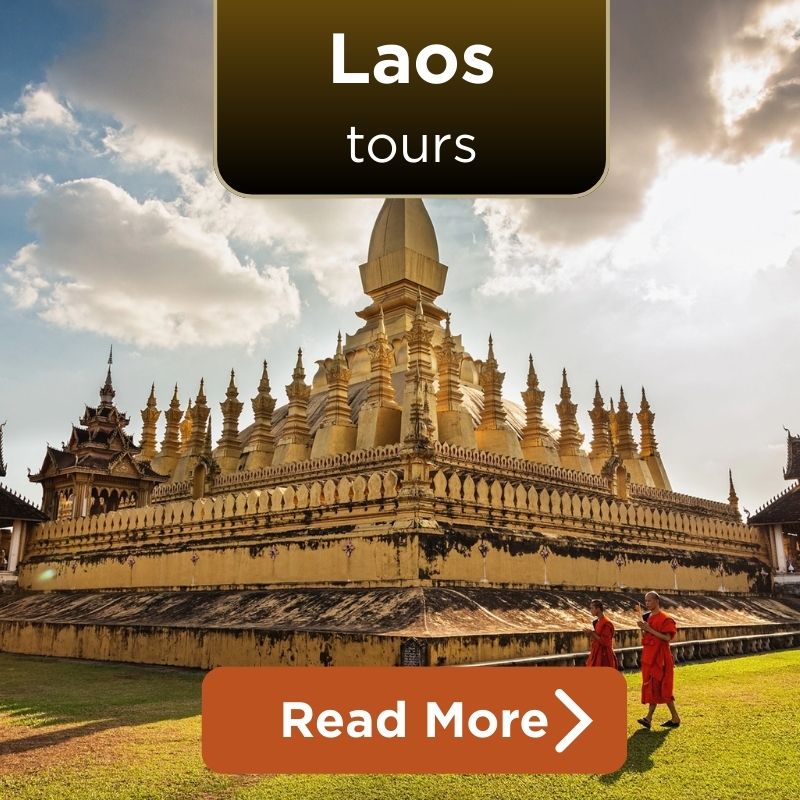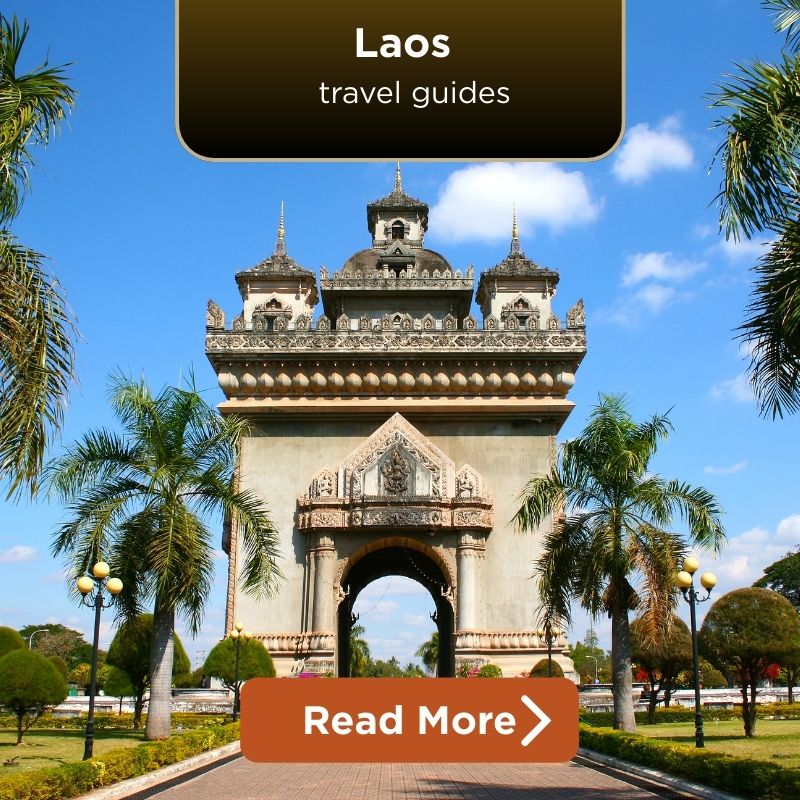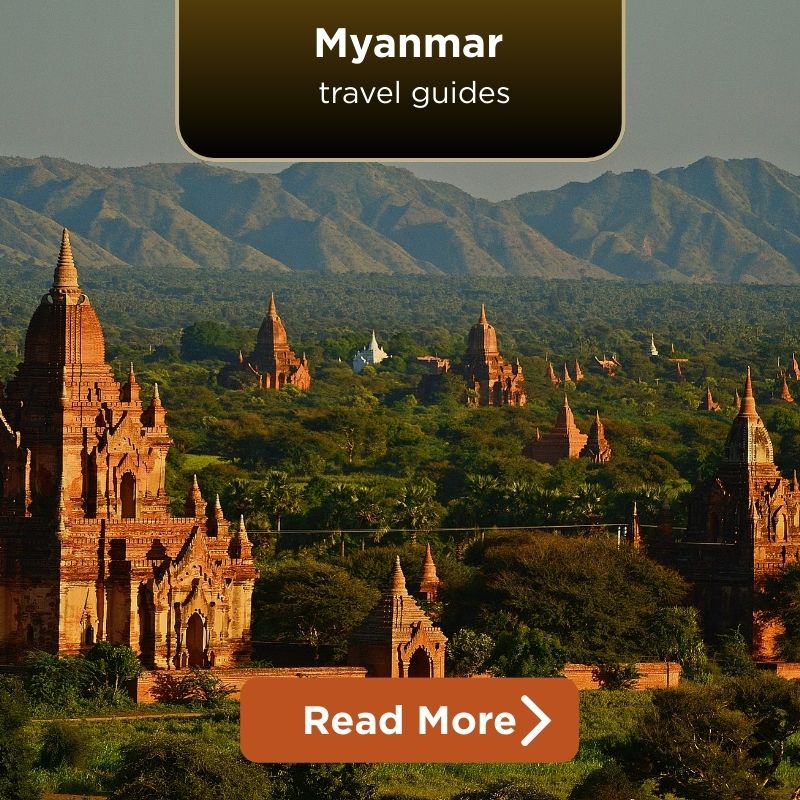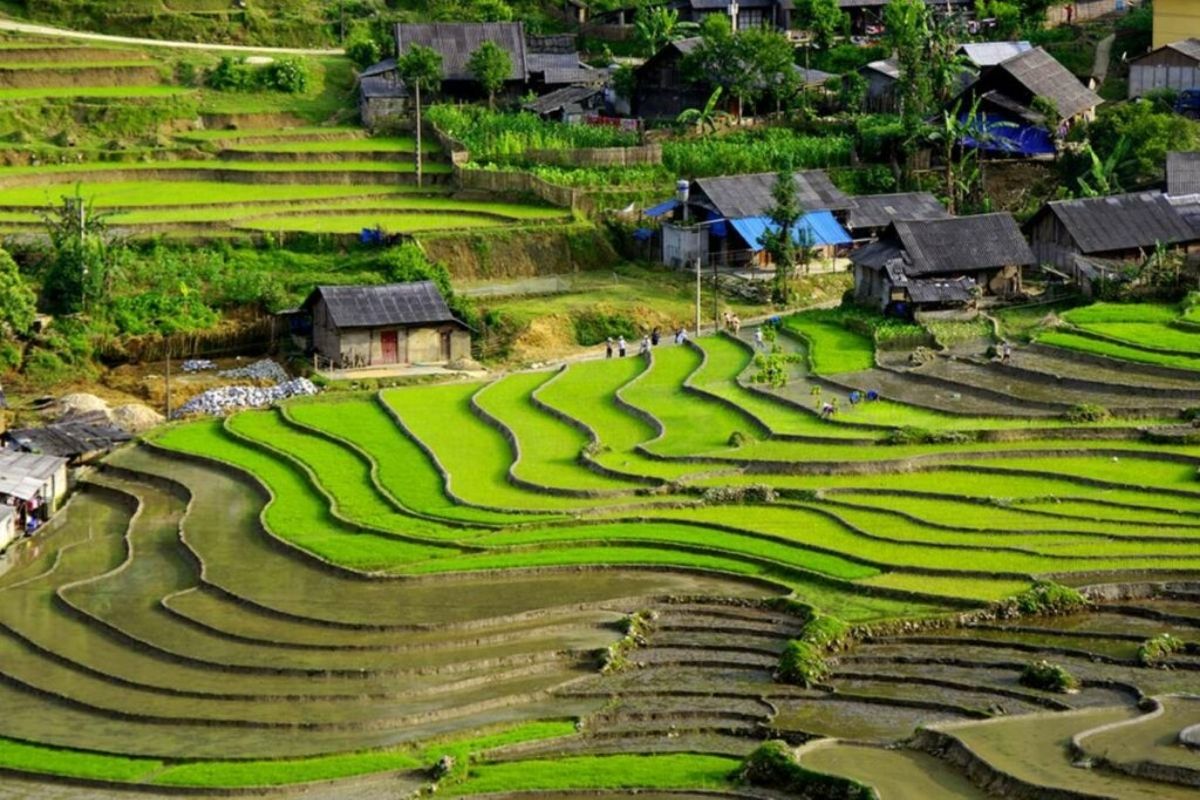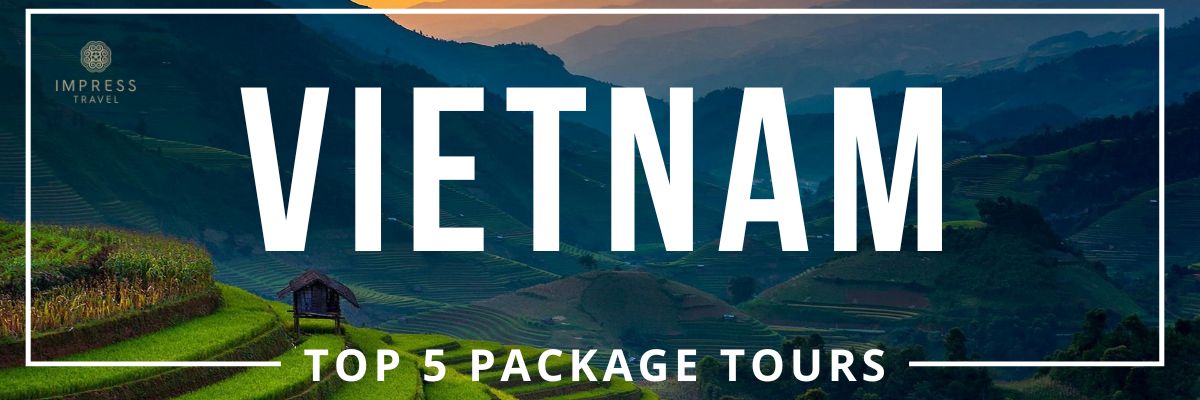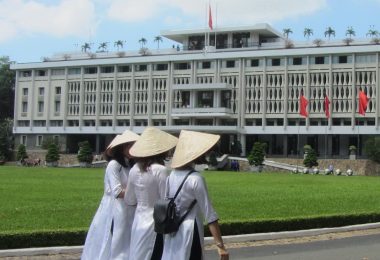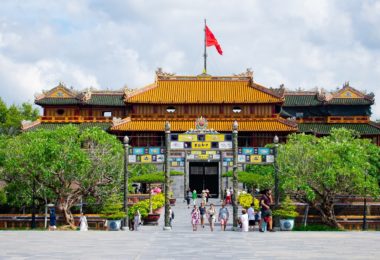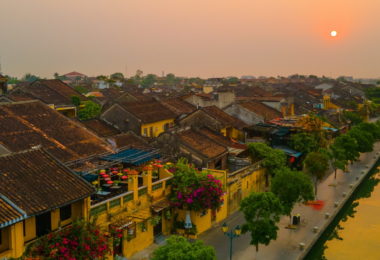Northern Vietnam: Lyrical Legacy of Rituals and Romance
Quan Ho – Love Duets from Bac Ninh
Originating from the Cau River area in Bac Ninh Province, Quan Ho is recognised as one of the typical musical styles of Northern Vietnam. Quan Ho, which was designated by UNESCO in 2009, is an art of antiphonal singing, in which men and women take turns with poetic love songs. The harmonies are sweet, the costumes elegant, the feelings deeply expressed.
Where to experience Quan Ho:
- Lim Festival is the most well-known activity for live music. Quan ho singing is the largest celebration of traditional quan ho singing that is organized at Tien Du district, Bac Ninh, Vietnam, each year on the 13th day of the Lunar New Year. It is performed on communal house yards, boats floating in lakes, and on hillsides.
- Performance schedules can be found at venues like the Vietnam Museum of Ethnology or heritage festivals at Thang Long Water Puppet Theater, in Hanoi.
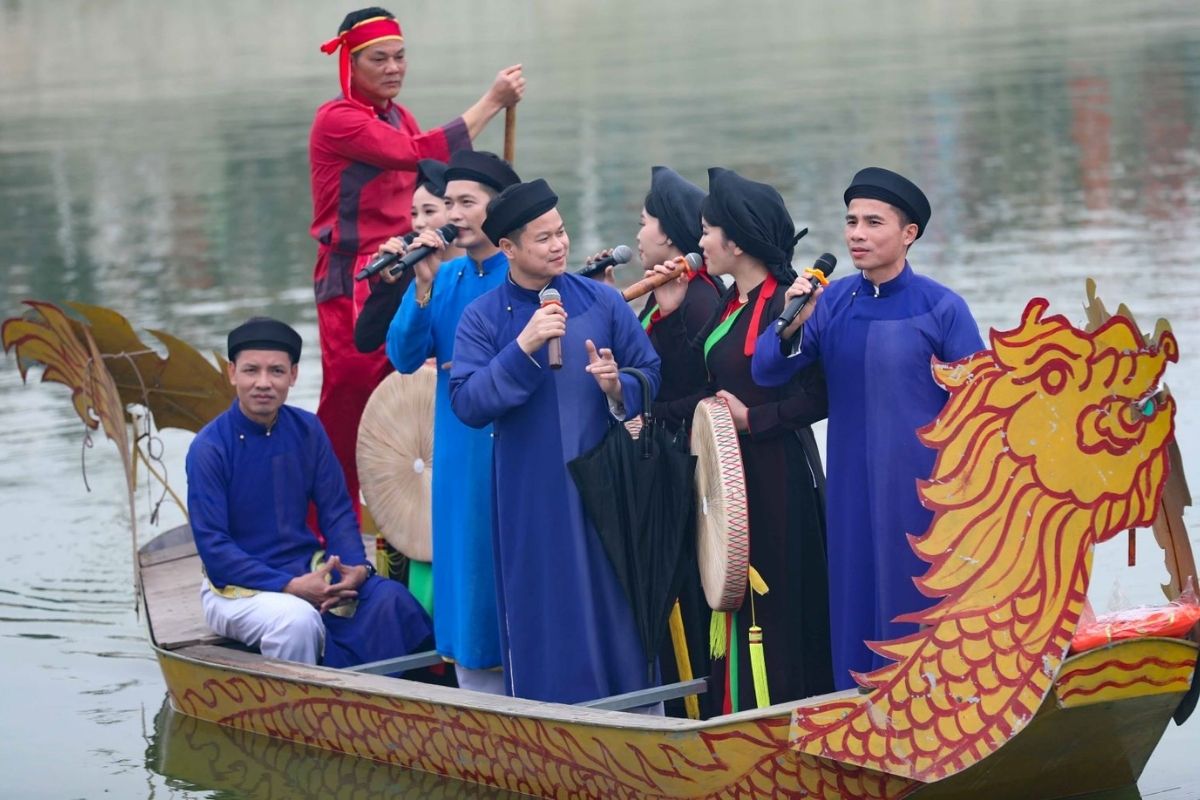
Quan Ho Bac Ninh (Source: qdnd)
Ca Tru – Chamber Poetry with Strings and Soul
With a history dating back to the 15th century, Ca Tru is an aristocratic, poetic form of traditional Vietnamese music that was originally played for nobles and scholars. It’s typically played by a female vocalist (the “ca nuong”) backed by a pair of long-necked lutes called dan day, wooden clappers called phach, and a “ceremonial drum” that is beaten by the audience, usually a poet or honored guest.
Where to see Ca Tru live:
- Ca Tru Thang Long Club, 28 Hang Buom St., Hoan Kiem District.; Hanoi – Popular for intimate weekend performances in a preserved 19th-century home.
- Bach Ma Temple, also on Hang Buom Street, stages intermittent heritage shows, particularly during traditional festivals.
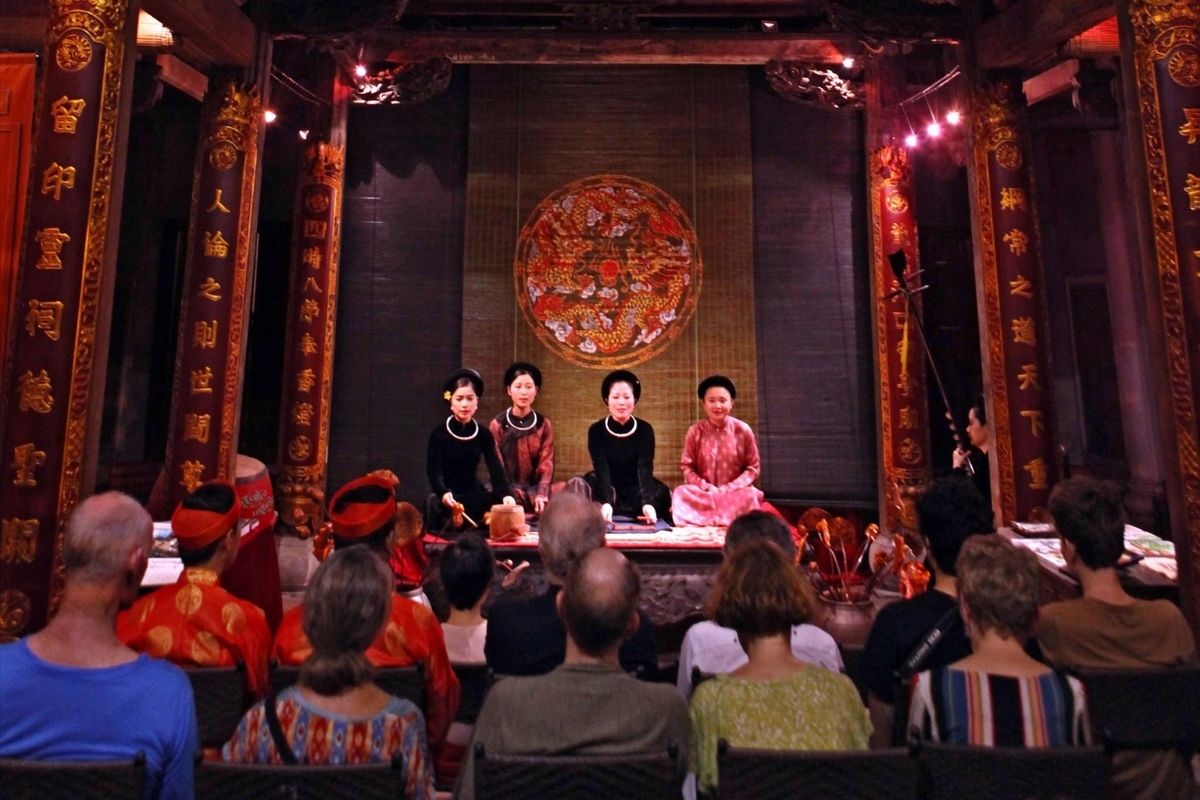
Ca Tru Thang Long Club (Source: vnanet)
Cheo – Folk Opera That Entertains and Educates
Cheo is the North’s answer to rural theater, a colorful medley of music, storytelling, comedy, and dance. Cheo, which has its roots in the 10th century, is frequently performed in open-air village squares, especially during seasonal festivals. Plots come from folk tales, legends, and contemporary matters; although his themes are serious, humor and satire are omnipresent.
Where to watch Cheo:
- Vietnam National Cheo Theater, Address: 71A Kim Ma Street, Ba Dinh District, Hanoi – traditional program being rearranged for modern life.
- Viet Phu Thanh Chuong, Soc Son, Hanoi – A cultural village situated in the countryside, where Cheo is performed amidst an area of heritage architecture.
- Duong Lam Ancient Village, Son Tay, Hanoi – Performances held on the occasion of festivals in the courtyards of residents.
Cheo is a classic example of the ways that Traditional Music in Vietnam links art to life in the community in educational and downright funny ways.

Vietnam National Cheo Theater (Source: vnanet)
Xam – The Street Music of the Blind
Previously performed by blind musicians for a living, Xam is the most touching and genuine type of Vietnamese music. It is simple and profound, improvisatory lyrics floating on humble traditional music instruments called the dan nhi and senh tien, telling stories of love, suffering, and daily life.
Where to enjoy Xam today:
- Xam Ha Thanh Group, including performances in and around Hanoi’s Old Quarter (Train Street, Hoan Kiem pedestrian zone (zone around the Hoan Kiem Lake, Ninh Thang Hang Street, Hang Bong Street, among others), night markets.
- Heritage Space, 28 Tran Binh Street, Nam Tu Liem District, Hanoi – Emerging with a modern twist and fusion vibe.
From the late 20th century, Xam has been brought back to life through dedicated artists who reject the past as the nostalgist’s philosophy; they have created a living art.
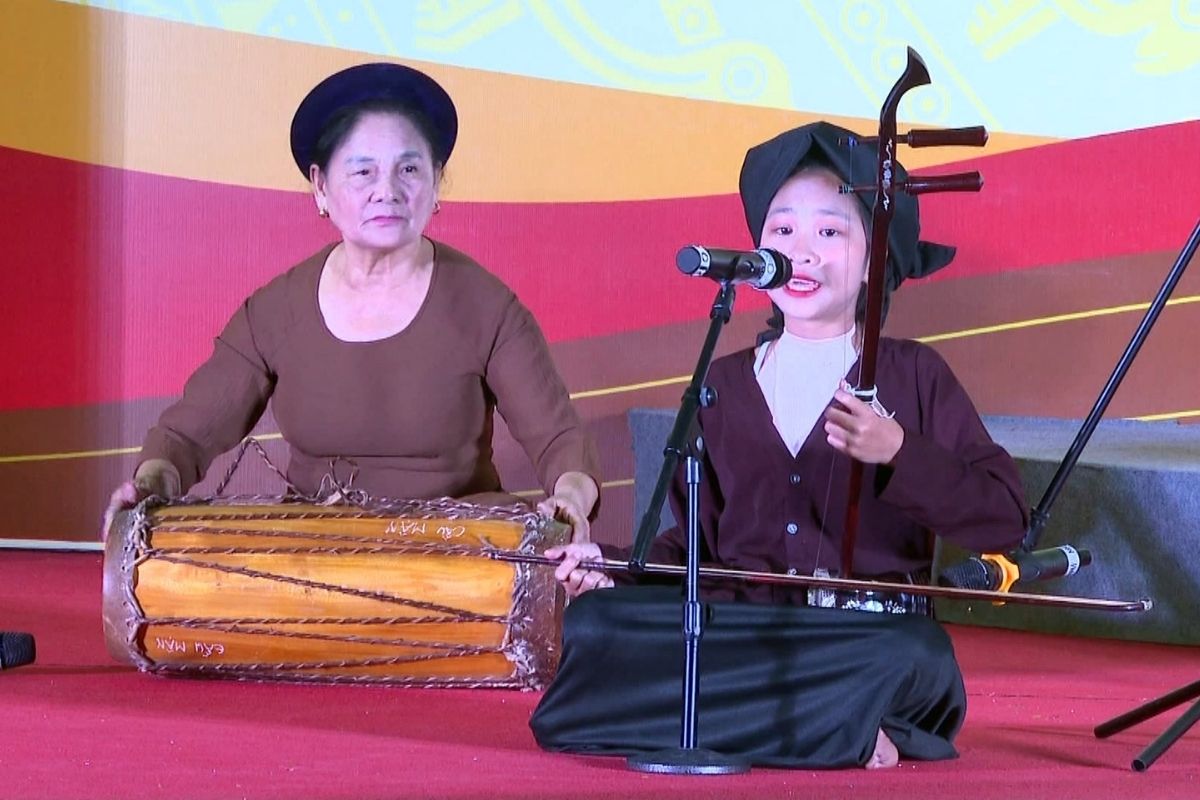
Xam Ha Thanh Group (Source: laodong)
Chau Van – Sacred Songs of Spirit Worship
With a strong connection with Mother Goddess worship, the two broad-toned lines of ritual music, performing accompanying possession and invocation, are known as Chau Van (or Hat Van). Its melodies are hypnotic and celebratory, often extending for hours, blending singing, dancing, and trance states.
Best places to witness Chau Van:
- Phu Day Temple Complex, Nam Dinh Province – The Four Palaces ’ spiritual capital, where, during the grand Phu Day Festival (spring lunar months), Chau Van is performed.
- Phu Tay Ho, West Lake, Hanoi – A holy temple and home to Sunday offerings and rituals, of which there are Chau Van performances.
- Vietnam Cultural Arts Museum, 22 Hang Buom, Hanoi – Sometimes used for Chau Van performing to promote the culture here.
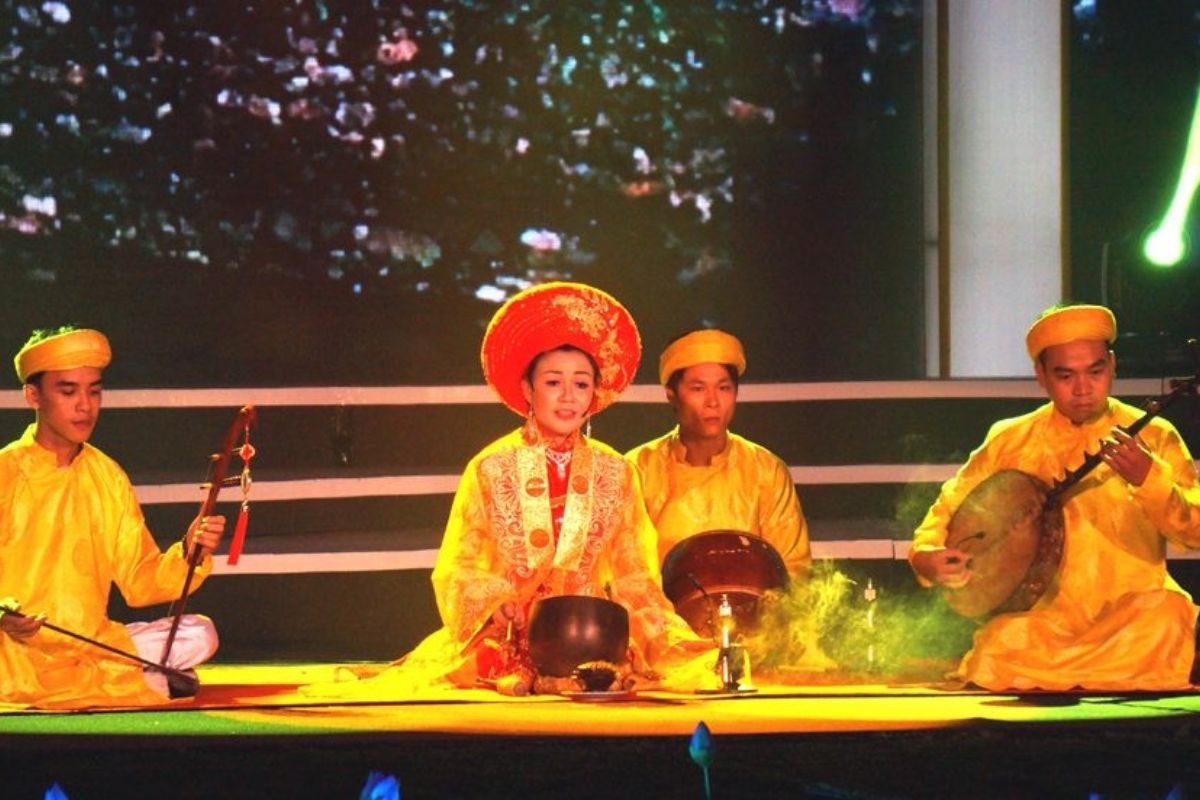
Chau Van at Phu Day Temple Complex (Source: dolenglish)
Central Vietnam: Harmony of Heritage and Courtly Elegance
Nha Nhac – Hue Royal Court Music
At the center of Hue, Vietnam’s former imperial capital, is the enduring beauty of Hue’s Royal Court Music (Nha Nhac), one of the country’s best-known and most sacred forms of music. Recognized by UNESCO as a Masterpiece of the Oral and Intangible Heritage of Humanity in 2003, the Hue Royal Court Music was performed for coronations, ancestral offerings, and royal feasts of the Nguyen Dynasty.
What makes it special?
This delicate style of music utilizes more than 20 traditional music instruments such as dan tranh (16-string zither), dan bau (monochord), drums, flutes, and bronze bells. The music is carefully written to correspond to the king’s dances, processionals to and from the priesthood, and the king’s poetry. The vocalists are frequently flamboyant, regaled in royal vestments as female vocalists strutting in smoky spaces that reek of incense and regalcentric tradition.
Where to experience it live:
- Duyet Thi Duong Theater, within the Hue Imperial City – Daily Live performance that displays royal court scenes, live instruments, and elegant dance.
- Hue Festival (biennial, every even year) – Large cultural festival with traditional performances going on throughout the entire city.
- Royal Theater at Hue Monument Conservation Center – Daily shows for cultural visitors and history lovers.
This is Traditional Music in Vietnam at its most imperial; each note is a vestige of imperial elegance.
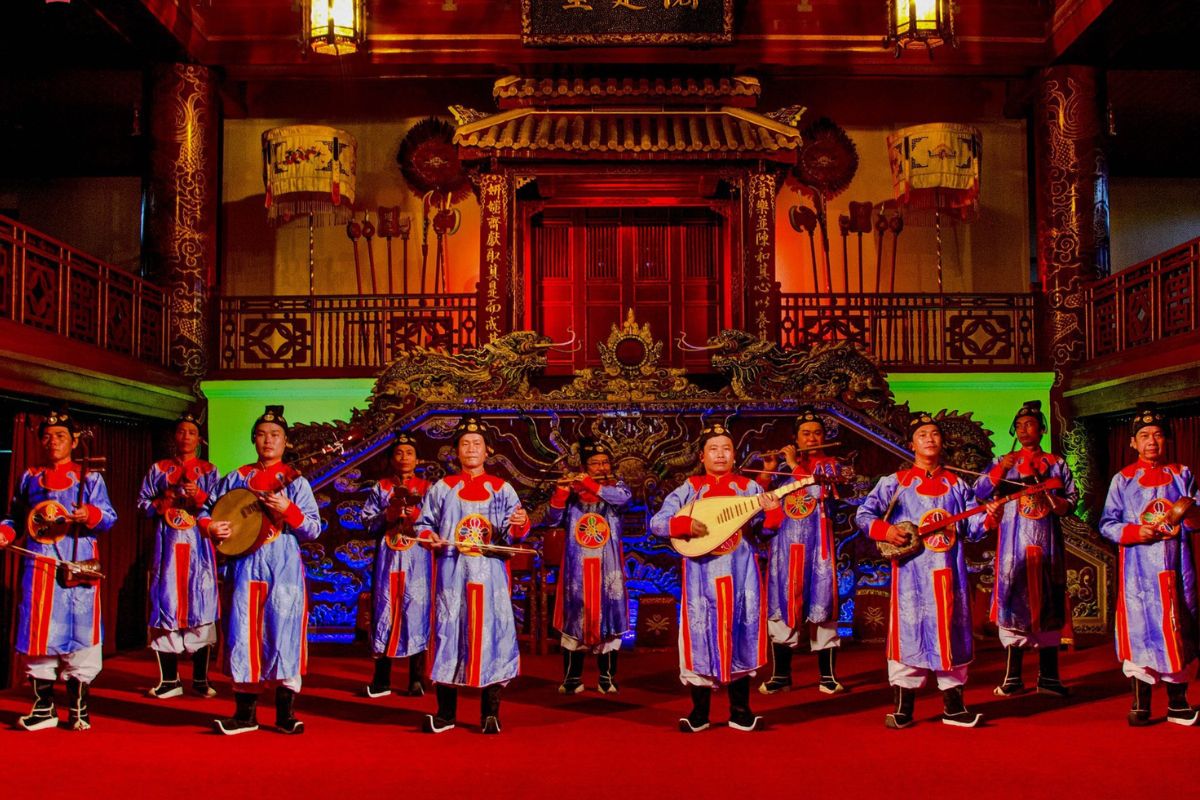
Nha Nhac at Duyet Thi Duong Theater (Source: bvhttdl)
Ho and Ly – Songs of the Working People
Venturing outside the courtly gates and into the countryside, we meet Ho and Ly, two locally grounded music forms that emerged from the experience of daily life. They are the chants of farmers, fishermen, and labourers, call-and-response songs that at one time were used to coordinate physical work or to voice personal sentiments.
- Ho is rhythmic and is often sung at times of rowing a boat, planting rice, and construction work.
- Ly is lyrical, with a keen interest in nature, love, and local stories.
Where to hear Ho and Ly:
- Quang Nam, Quang Ngai, and Thua Thien-Hue Provinces – During Tet holidays, spring fairs & village market days.
- Cultural shows in Da Nang and Hoi An – Ho & Ly are often mentioned in village storytelling.
These golden songs make us remember that Traditional Music in Vietnam is not simply the identity of nobles, but it belongs to the people.
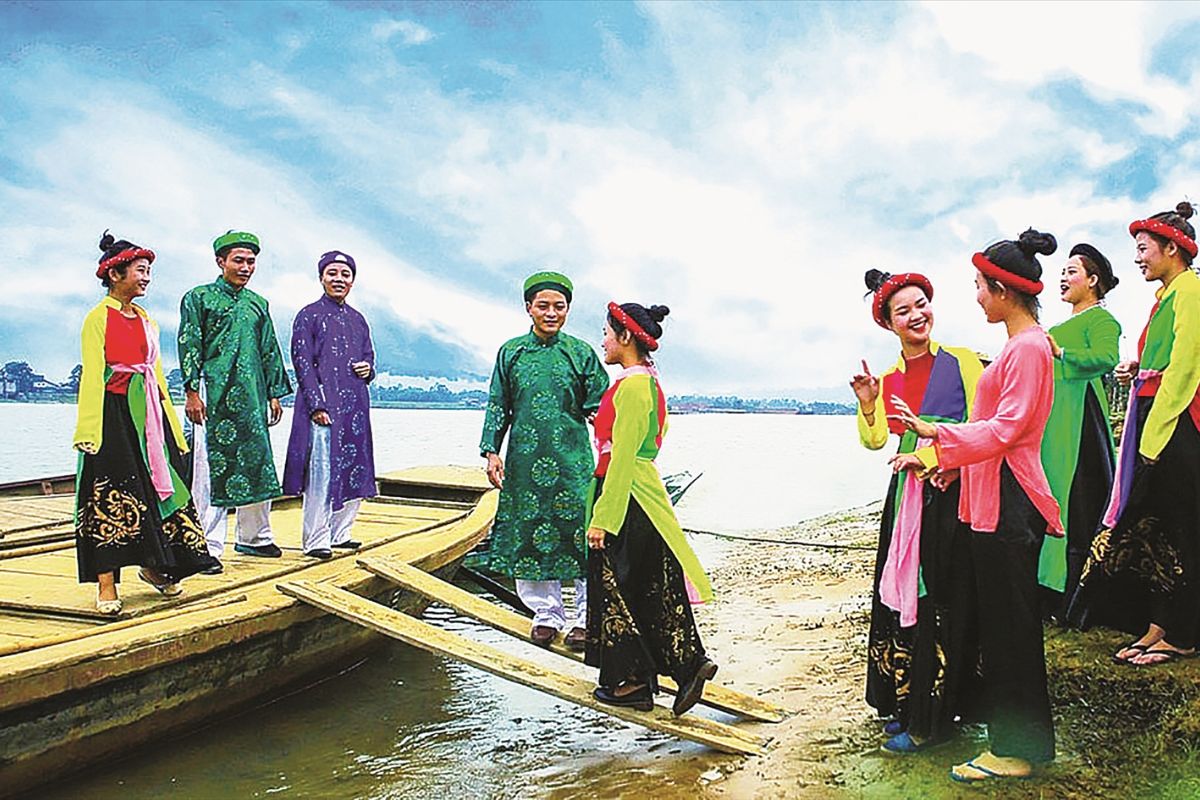
Ho and Ly in Quang Nam (Source: heritagevietnamairlines)
Tuong – Vietnam’s Classical Dramatic Theater
Tuong is Vietnam’s answer to classical Chinese opera and a grand, stylized form of music that melds strong vocals, masked acting, and martial arts movement. Originating in the 13th century, Tuong took hold in Central Vietnam, from Hue to Da Nang, as a form of popular entertainment with stories about resistance and moral behaviours.
What makes Tuong unique?
- Elaborate makeup and colorful costumes.
- Powerful themes of loyalty, bravery, and a history-driven story.
- With accompaniment by traditional music instruments such as the moon lute, small drums, and clappers.
Where to see Tuong:
- Nguyen Hien Dinh Tuong Theater, Da Nang City – Weekly performances to save this theater art form.
- Hue Royal Theatre – Special performance during the Hue Festival or on request
Tuong is where music, history, and theater meet, one of the finest expressions of traditional Vietnamese culture.

Tuong at Nguyen Hien Dinh Tuong Theater (Source: nhahatntttbinhdinh)
Xoan Singing – A Ritual Spring Harmony
Originating in Phu Tho Province, Xoan Singing is a part of the heritage of Central Vietnam. Practiced in springtime at communal temples during the spring sowing season, Xoan is a rhythmic and spiritual art form combining ritual singing, dancing, and drumming.
A form of music recognized by UNESCO in 2017, Xoan consists of small band performances, in which villagers sing in praise of the land, god, and the ancestors, typically led by a dexterous female singer who functions as both performer and spiritual guide.
Where to enjoy Xoan:
- Hung Kings Temple, Phu Tho Province – On the occasion of the Hung Kings Commemoration Day (the 10th day of the 3rd lunar month).
- Xoan Heritage Houses, Viet Tri City – Public performances are accessible for tourists and cultural groups.

Xoan Singing at Xoan Heritage Houses (Source: bvhttdl)
Music in Daily Life and Festivals
One of the most appealing things about Traditional Music in Vietnam in the Central region of the country is how intertwined it is with day-to-day existence. Whether in a spring festival, a moonlit courtyard, or a temple celebration, you’ll find:
- Drum ensembles accompany lion dances throughout Tet.
- Mother Goddess worship is preceded by trance music and offerings.
- Massed singing competitions in Hue villages, where generations gather to transmit tunes of the past.

Lion Dances Throughout Tet (Source: daidoanket)
Southern Vietnam: The Soul of the Countryside
Don Ca Tai Tu – The Heartbeat of the Mekong
Mekong Delta, with the vibrant sound of Don Ca Tai Tu (Southern music) to reflect one of the favorite music styles of Vietnam. Patented in the late 19th century, this style is appreciated for its improvisational sophistication and deep sentiment. The songs are typically introspective: poetic expressions of love, melancholy, and the beauty of southern vistas.
What makes it special?
- Small band shows offering traditional musical instruments like the dan tranh, dan bau, moon lute, pipa, and flute.
- Musicians regularly come together unofficially, playing late into the night after crop harvests or on boats bathed under starlight.
- It is also the base for the more innovative Cai Luong operatic form
Where to experience it live:
- Can Tho, Ben Tre, Vinh Long – A lot of the “eco-resorts” and homestays put on evening shows in traditional garden houses.
- Southern Folk Music Museum, My Tho City, Tien Giang – Showcases selected musical items and artefacts.
In 2013, UNESCO inscribed Don Ca Tai Tu on the List of Intangible Cultural Heritage in Need of Urgent Safeguarding. It is an indigenous art of the Southern region.
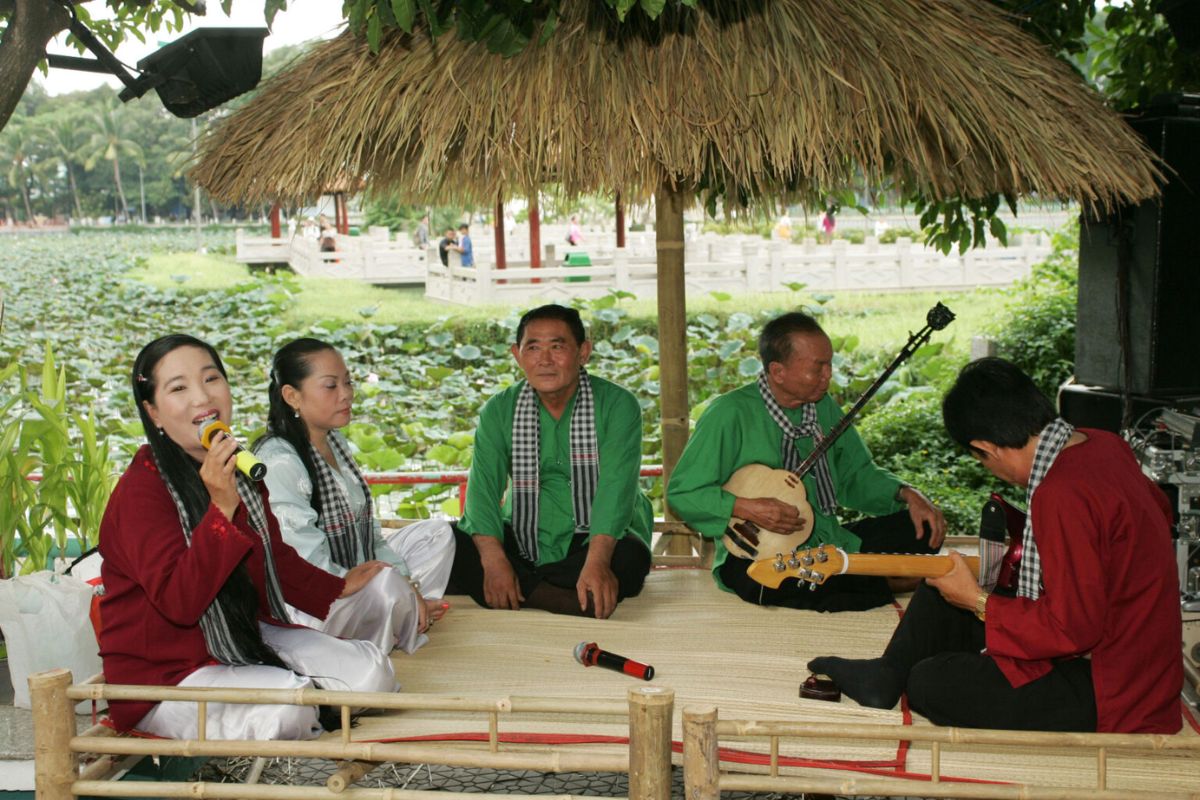
Don Ca Tai Tu in Ben Tre (Source: haoquanggroup)
Cai Luong – The Opera of the Mekong Spirit
Born of Don Ca Tai Tu, Cai Luong is the dramatic soul of the South. This type of music, which became popular in the 20th century, tells stories of love, loyalty, and society, and combines traditional and Western theatrical styles. Sing, not speak, is the actors’ method of communication, and they offer up arias with a burst of song and a great deal of expressive body language while garbed in cloaks, feathers, and frills.
Cai Luong elements:
- Backed by a large traditional Vietnamese wind and string ensemble.
- Scripts range from modern social dramas to old stories.
- A woman’s voice sings the lead part sweetly and can emote without being overbearing, a nimble vocal that waxes occasionally from high pitch to crystalline highs.
Where to watch Cai Luong:
- Tran Huu Trang Theatre, District 1, Ho Chi Minh City – The heart of the modern Cai Luong show.
- Dong Thap, Long An, and Vinh Long provinces – Village troupes are common during Tet and post-harvest village festivals.
It is nothing but ‘the countryside heart’ and ‘the stage spotlight’ brought together in Cai Luong – a statement of creativity of the Vietnamese nation’s spirit.
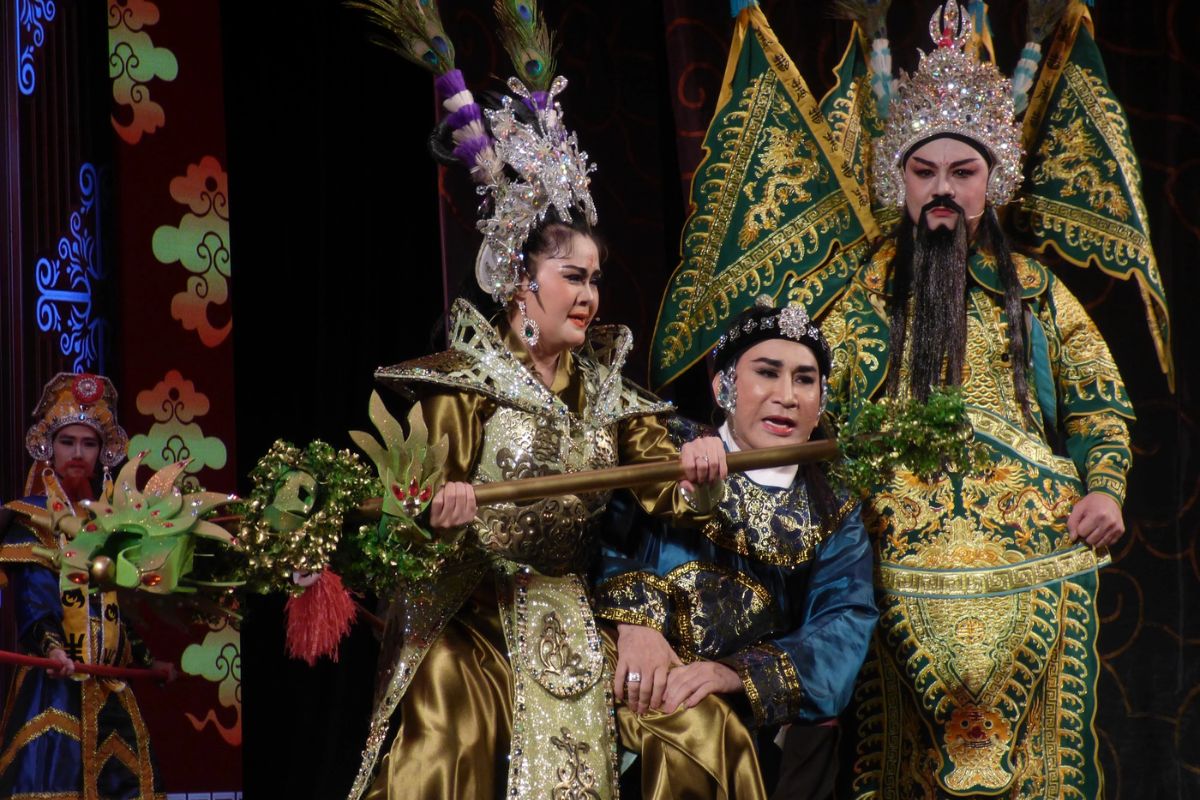
Cai Luong at Tran Huu Trang Theatre (Source: baothanhnien)
Bai Choi – A Musical Game of Strategy and Song
Travelling up the coast into the borderlands of Central and Southern Vietnam, we find Bai Choi, a captivating mix of folk game, music, and performance dance. It’s a cross between bingo, celebration, and operetta!
Key features:
- Players squat in huts (chòi) and take turns holding cards with folk verses.
- A singer-performer (usually, but not always, a smart-aleck female singer) gives rhymed clues with a comic cast.
- The occasion will feature audience participation, laughter, and plenty of melody.
Where to join Bai Choi:
- Hoi An Ancient Town – Public squares are venues for Bai Choi performances every weekend and on the occasion of a Tet festival.
- Quang Ngai and Binh Dinh provinces – regions with numerous UNESCO-recognized Bai Choi traditions.
Bai Choi is a wonderful example of how Traditional Music in Vietnam can change the way people play the game, to a joyous community gathering, which is zealous and enlightening.

Bai Choi in Hoi An Ancient Town (Source: thanhnien)
Cultural Tapestry: Khmer and Cham Influences with Traditional Music in Vietnam
In Southern Vietnam, music is not separate. It’s been braided into the traditions of other ethnic groups as well, including those of the Khmer and the Cham, who contribute distinct instruments, rhythms, and spiritual significance.
- Gongs, flutes, and drums accompany Khmer dance, theater, and temple rituals.
- Cham music consists of a harplike instrument and chanting, all in homage to Hindu deities.
You can explore these influences at:
- Oc Eo Cultural Park, An Giang Province – Displays Khmer and Cham musical instruments.
- Cham Culture Museum, Nha Trang – Ancient style of Cham music at Cham Music Research Center of the Cham Culture Museum.
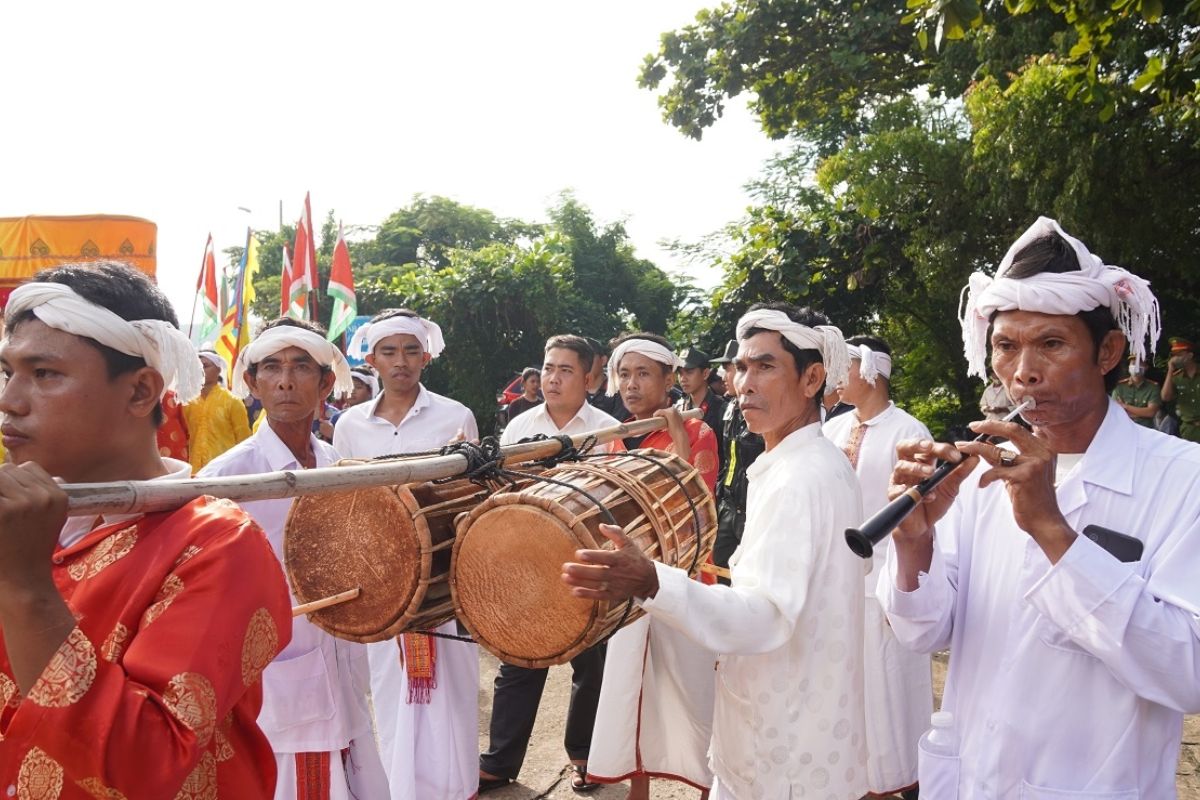
Gongs, flutes, and drums accompany Khmer dance (Source: baodantoc)
Music and Rural Celebrations with Traditional Music in Vietnam
In village communities throughout Southern Vietnam, music is brought to life at the time of the rice harvest or of communal feasts. Locals gather for:
- Spontaneous Don Ca Tai Tu jamming.
- Cai Luong performances are featured on travelling stages using bamboo mats.
- Weddings and house parties with live music and poetry recitation.
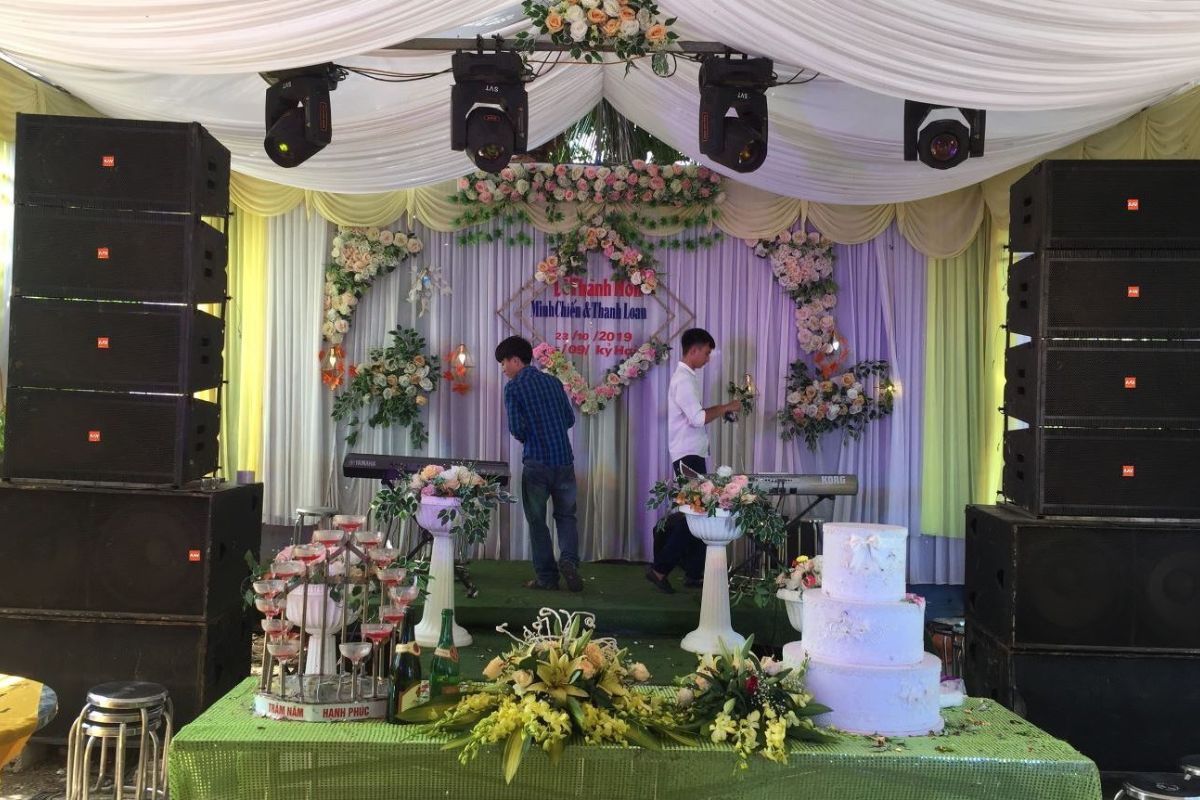
Weddings and house parties with live music (Source: viethungaudio)
Minority Ethnic Music Traditional Music in Vietnam
A Symphony of 54 Cultures with Traditional Music in Vietnam
From the hill tribes in the extreme North to the Ede and Jarai in the Central Highlands, each ethnic group maintains its vibrant tradition. These music genres are not just for entertainment, the core of birth celebrations, marriage ceremonies, harvest feasts, and even funeral rituals.
In these villages, music is a spiritual language, transmitted by word of mouth through generations, frequently under the guidance of downtown elders or a revered female singer. Whether we’re talking about leaf-whistling in Ha Giang, reed pipes in Lai Chau, or rhythmical chants in Dak Lak, the music is always anchored to a place, to an ancestry, and to an identity.
Gong Music of the Central Highlands with Traditional Music in Vietnam – Rhythms of the Sacred
Among the best-known traditions is the Gong Music of the Highlands, with the Bahnar, Ede, Jarai, and Xo Dang ethnic groups all performing this type of music. Acknowledged as a form of heritage by UNESCO in 2005, this style is based on spirituality – it’s believed that a spirit exists within each gong and its sound is an offering to the gods.
Where to experience Gong music:
- Kon Tum, Gia Lai, Dak Lak, and Dak Nong provinces – especially village festivals and Vietnam cultural festivals such as Gong’s festivals in Gia Lai.
- The Buon Ma Thuot and Da Lat Ethnographic Museums have performances available year-round on a scheduled arrangement.
Extraordinary Traditional Music Instruments for Traditional Music in Vietnam
Vietnam’s ethnic minority communities have created many interesting musical instruments, some of which reflect their strong relationship with nature:
- T’rung: Ede and Gia Rai bamboo xylophone, played at large, open spaces in forests or fields.
- Khen: A multitubed wind instrument of the Hmong, usually played by young men in courting songs and whose tones are both romantic and meditative.
- Dan Da, an ancient lithophone (a stone instrument), is defined among the M’nong and Churu as the sound of a bell reverberating from the ages before time.
- Pan Flute and Leaf Whistling: Prevalent in Northern Hmong communities, these gentle instruments convey words unspeakable.
Conclusion
Traditional Music in Vietnam is also more than just a melody-it is the heartbeat of the Vietnamese people, resonating throughout every aspect of the Country: region, ceremony, and generation. From royal courtyards to riverside hamlets, these sounds are preserving the soul of 54-plus ethnic groups and the diversity of traditional Vietnamese culture. So don’t just look from a distance, see a live show, attend a local festival, or visit a village. Let the music introduce you to Vietnam’s timeless tale.
FAQ about Traditional Music in Vietnam
1. What is traditional Vietnamese music called?
Traditional Vietnamese music is highly diverse and syncretic, combining native and foreign influences. Popular genres are Ca Tru, Cheo, Quan Ho, Don Ca Tai Tu, and Hue Royal Court Music, which tend to represent the soul of the Vietnamese people and the identity of each region.
2. What kind of music is popular in Vietnam?
Today, in Vietnam, the music tastes are widely popular with pop, ballad, and indie. Nonetheless, Traditional Music in Vietnam is still extremely significant, particularly within festivals, prayers, and cultural shows. A new direction by young performers also mixes traditional sound with modern music.
3. What are the 4 types of traditional music?
There are a lot of, but four typical kinds of traditional Vietnamese music:
- Quan Ho (Northern love duets)
- Ca Tru (chamber music with poetic lyrics)
- Don Ca Tai Tu (Southern amateur music)
- Hue Royal Court Music (ceremonial music of the imperial dynasty)
These forms emerge as various regional and community-based genres of music.
4. What is Vietnam’s typical song?
Vietnam does not have a single “typical” song, but the Quan Ho folk songs of northern Vietnam and Don Ca Tai Tu tunes of the Mekong Delta are frequently cited as representative. These are the styles that reflect the emotion and pride from Traditional Music in Vietnam.






